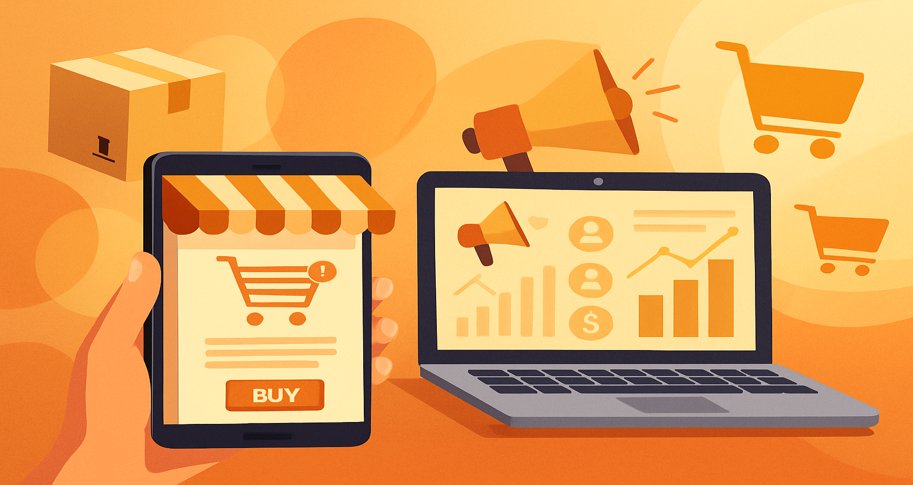
To suggest e-commerce is without its downsides would be to cast a blind eye on the
many problems facing the massive online retail sector. Commentators have observed
the rise of warehouse towns, typically poorer to begin with and now beset by ailments caused by shipping emissions.
And those emissions are also a not insignificant amount of our economy’s annual environmental
impact, a consequence of the convenience of having goods shipped to our doorsteps.
Just about any online shopper – and any town’s exasperated recycling program – could
tell you that e-commerce survives on a glut of cardboard and other packaging materials. They are among some of the most visible forms of waste associated with shipping, and, according to an MIT study from 2020, packaging accounts for just under half of shipping emissions.
But does focusing solely on emissions keep us from seeing the whole picture?
Dean Brent Williams, the Garrison Endowed Chair in Supply Chain Management at the University of Arkansas,
and his coauthors, Travis Tokar, Associate Professor of Supply Chain Management at Texas Christian University, and
Robert Jensen, doctoral candidate in Supply Chain Management at the University of Arkansas, suggest
we might be privileging visible negatives without properly appreciating the net benefits
of e-commerce. In “A Guide to the Seen Costs and Unseen Benefits of e-Commerce,” they assess the relative negative and positive effects of e-commerce, finding that,
in general, the development and consumer adoption of e-commerce is a net boon for
society. They further warn that without appreciating the benefits of online retail,
policy aimed at countering immediately visible problems may end up doing more harm
than good.
Better Living through E-commerce
The researchers’ suggestions follow in the wake of economics giants: Frédéric Bastiat, Henry Hazlitt (of Economics in One Lesson fame), and Thomas Sowell. These economists call on us to evaluate not just the seen impacts of our actions
and decisions but also the unseen ramifications that ripple out from our policies
and choices. Williams and his coauthors note that these economic insights do not mean
a forgone conclusion that the unseen benefits will necessarily outweigh easily identifiable
costs. Rather, it is only with both the seen and unseen laid out before us that we
can make a sober, appropriate policy decision.
The researchers urge policymakers to be cautious in the face of what they characterize as our “problematic, do-something”
politics. No one wants unintended, second-level consequences of good intentions to leave the
economy and environment worse off than where it started. Sowell himself argued that “the alternative to a ‘do something’ approach is not to have the government
always do absolutely nothing;” instead, we must recognize that governments can only take specific actions, which can only be assessed by their specific
effects. Moreover, Sowell continues, these policies will benefit someone. The question is whom and whether their interests really benefit all of us.
And despite the appearances of our mountains of trash, the digital economy produces
more value in our lives from less material. Williams, Tokar, and Jensen remind policymakers
that technology and profit motive are the twin engines of this economy’s efficiency.
E-commerce simply appears to be another facet of this movement, getting consumers
the products they need and want while consuming fewer resources to do so. For example,
during the early parts of the pandemic, we saw much cleaner air, which both decreased deaths from typical respiratory illness and helped broaden
scientists’ understanding of atmospheric chemistry, air pollution, and public health
while also seeing a marked increase in online purchasing and shipping.
The Problems E-commerce Can Solve
We all know that e-commerce requires lots of packaging, an input made more problematic
by China’s refusal to take in other countries’ trash after years of being the “world’s garbage dump.” And, although more Americans adopted
the practice of recycling, municipalities did not know what do with their recycling, consequently sending many recycled materials to landfills. The situation isn’t helped by consumers’ wishcycling, where they toss materials into a recycling bin hoping it can be recycled.
We can easily see this problem, especially since it’s piling up in our homes, but what we fail to see, they point out, is how much trash traditional brick-and-mortars
produce. Anecdotally, from a series of odds jobs in my teens and early twenties, I can confirm
their point: a lot of easily recyclable boxes and plastics (#1 and #2) go straight
to the dumpster.
Stores are delivered shrink-wrapped goods atop pallets, which are often assembled
in distributors’ warehouses from goods that were delivered to them via shrink-wrapped
pallets. That is, there’s at least one stage of shrink-wrapping that e-commerce prevents.
Many things purchased in stores are then toted out in plastic bags, of which only about 10 percent are recycled. The authors note that other trash producers include receipt paper, flyers, catalogs,
store card offers, and promotional materials added to customers’ bags at check out.
Okay, but how about getting to the goods or getting them to you? With the increase
of delivery vehicles, many cities are slated to experience 21% more roadway congestion and 32% more emissions attributed to those vehicles. The researchers recognize that
these problems are no small concern, but, they argue, we should consider the unseen increase in fuel-use efficiency. Unlike the scores of unconnected consumers, delivery companies route their vehicles
as efficiently as possible to help reduce operating costs, and with technological
improvements, route optimization can be done in real time. Recent (pre-pandemic) research also suggests that online shopping keeps consumers off the roads, offsetting some of the negative effects of the increase in delivery vehicles.
Here’s a fun activity for you: in the interest of consumer choices, you’re welcome
to try planning your own efficient trips if you think you can do better than the delivery firms. Send us the results of your experiment; we’d love to hear how it went and what your experiences were.
Even with the increase in delivery vehicle emissions, Williams, Tokar, and Jensen
also remind the reader that, by keeping consumers out of stores, online retail reduces the building emissions. E-commerce is emptying out malls, so there are fewer idling air conditioning systems, which chew through a considerable amount of energy for climate control. For the stores that don’t close, the researchers predict their materials (carpets,
carts, shelving, etc.) will have longer lifetimes, and these stores can have a smaller
footprint. Likewise, fewer in-store shoppers mean stores could reduce their parking
lot footprint and lower maintenance costs.
Recommendations
Williams, Tokar, and Jensen are necessarily conservative with their recommendations.
They admit that since the “countervailing effects are admittedly difficult to quantify,”
policymakers should be judicious when considering new legislation and regulation to
address some of the more highly visible problems caused by e-commerce.
For example, to address delivery truck emissions, the researchers point to the cause
of California, which has approved legislation to require delivery vehicles be zero-emission by 2035. Southern California, in fact, wants to move faster than that 2035 target date. The regulation forces businesses to invest in zero emission, electric fleets, despite
the lack of clear evidence that electric vehicles are much better for the environment. Moreover, the researchers argue that this forced investment
will undercut businesses’ ability to develop innovative, more promising solutions,
such as delivery drones, dynamic re-routing, and load pooling. For a short-term fix,
the legislation reinscribes the status quo of road-based delivery, doing nothing to
address congestion, and it forces the adoption of a technology that has yet to bear its promised fruit.
And companies have also taken note. Amazon, for example, has started encouraging its
Prime members to bundle their orders to be delivered on one day of the week. To that end, the MIT study from early found
that such a behavior change would result in a 30% reduction in e-commerce-related emissions. Delivery fleet electrification? According to the MIT researchers, that would only
reduce e-commerce emissions by 5%. “Doing something” and pursuing a political win
does provide relief – but 5% is a meager improvement compared to the 30% that a simple
change to customer behavior would bring.

 Robert is a 4th year PhD student in the supply chain management department at the
University of Arkansas and completed his M.S. in economics at the University of Nebraska
- Omaha. His research interests stem from previous experiences in retail management
operations, and include omnichannel retail operations and consumer responses to retail
failures. He has a secondary interest in sustainable operations.
Robert is a 4th year PhD student in the supply chain management department at the
University of Arkansas and completed his M.S. in economics at the University of Nebraska
- Omaha. His research interests stem from previous experiences in retail management
operations, and include omnichannel retail operations and consumer responses to retail
failures. He has a secondary interest in sustainable operations.




